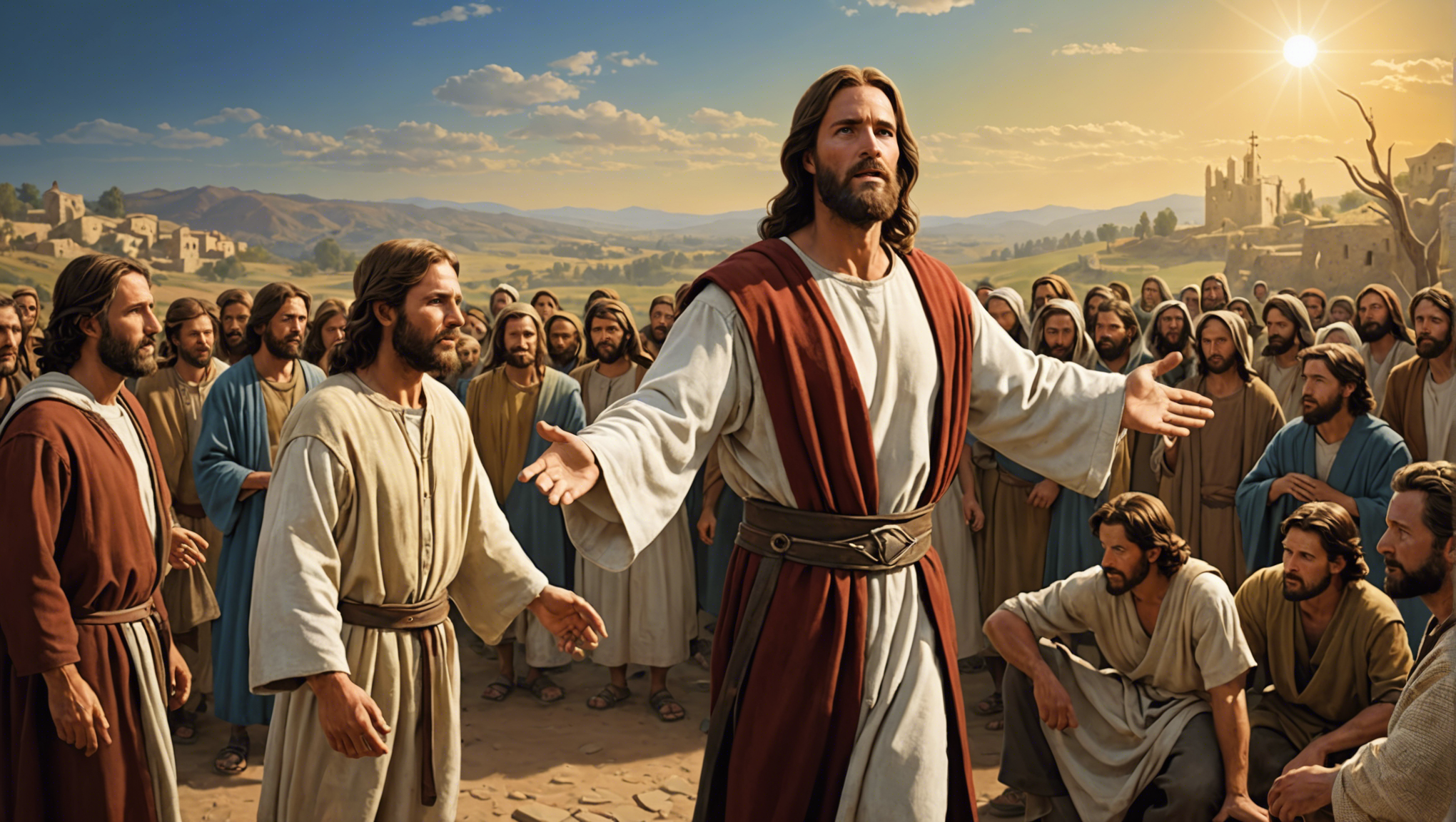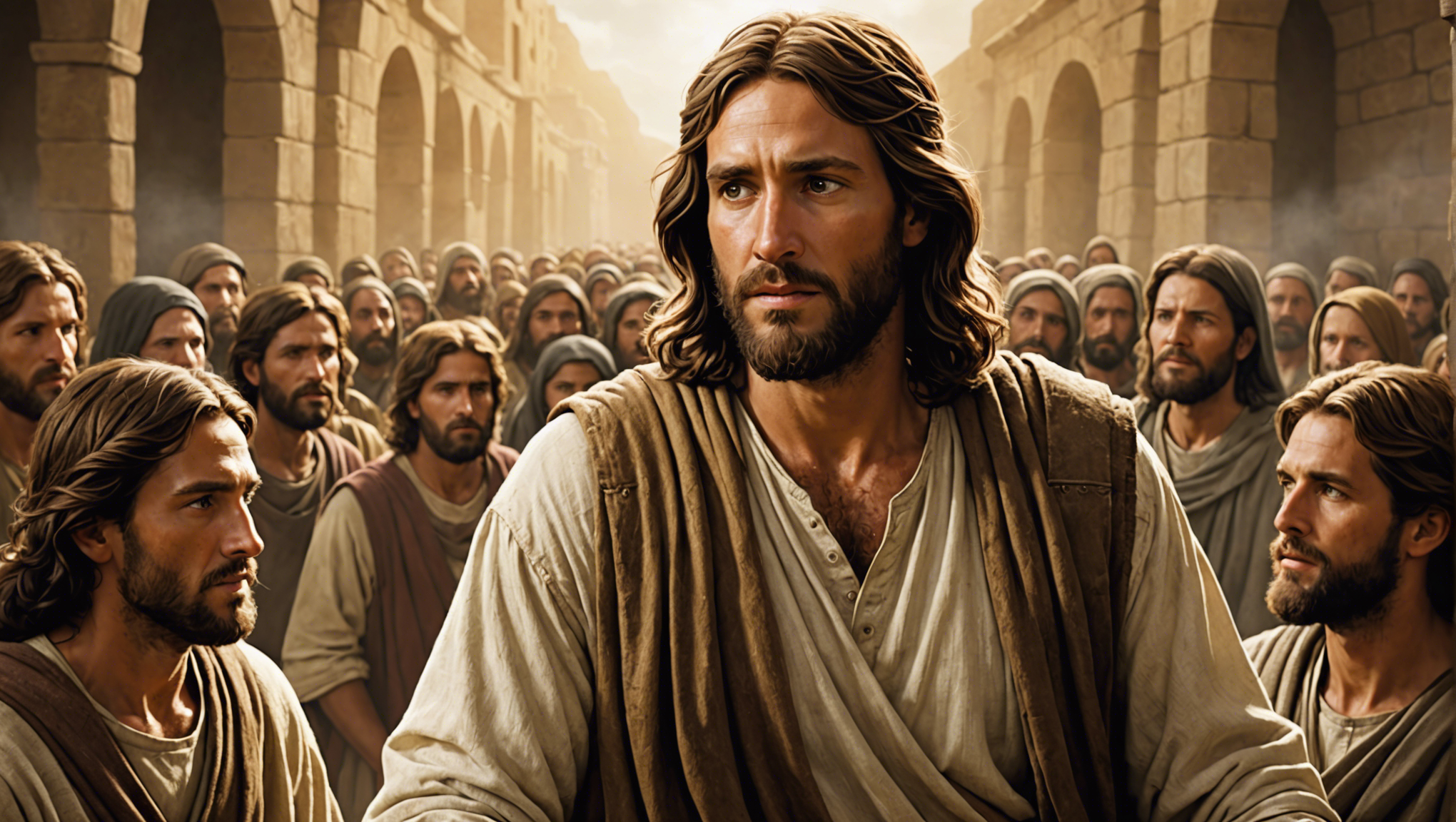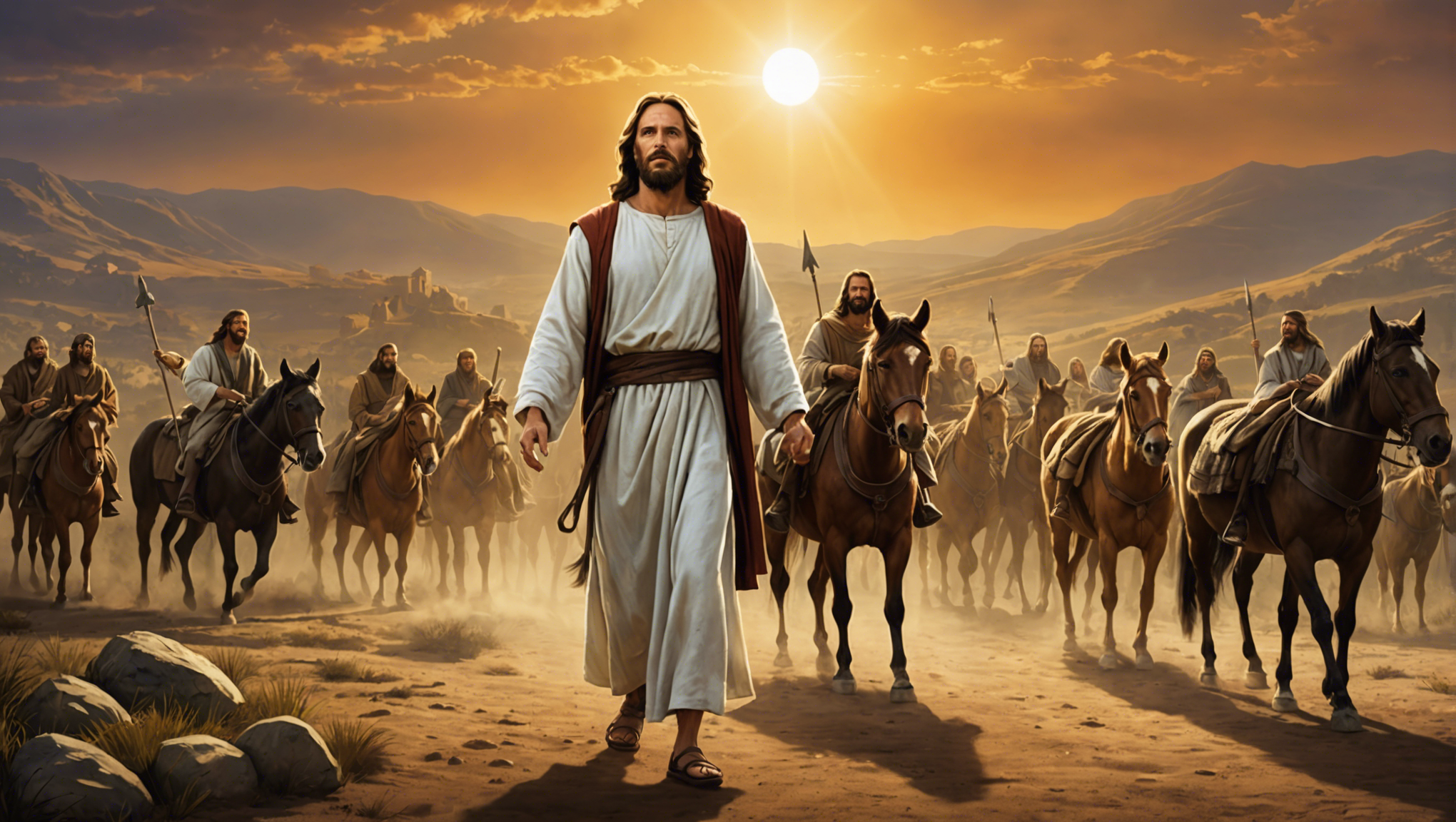Discover the extraordinary wonders of Jesus’s miracles and their profound significance in this enlightening article. Unravel the mystique surrounding these miraculous acts and delve into their timeless impact on faith and spirituality. Join us on a journey of wonder and reflection as we explore the miracles of Jesus.
The Miraculous Feeding of the Five Thousand

The Setting
The miraculous feeding of the five thousand is one of the most well-known miracles performed by Jesus during his ministry on Earth. This extraordinary event is detailed in all four Gospels, highlighting its significance and impact on the people who witnessed it.
The Context
Taking place near the Sea of Galilee, Jesus and his disciples found themselves surrounded by a large crowd of people who had been following them to hear his teachings and witness his miracles. As the day wore on, the disciples became concerned about the lack of food for the thousands gathered.
The Miracle Unfolds
In response to the disciples’ worries, Jesus took five loaves of bread and two fish, offered by a young boy, and blessed them. In a profound display of divine power, Jesus multiplied the meager provisions to feed the entire multitude of five thousand men, plus women and children, with an abundance of food.
The Symbolism
This miraculous feeding not only demonstrated Jesus’ divine authority over creation but also served as a symbolic foreshadowing of the spiritual nourishment he offers to all who believe in him. Just as he physically fed the hungry crowd, Jesus provides sustenance for the soul, offering eternal life to those who partake of his teachings and accept him as the Bread of Life.
The Response
The astonishing miracle of the feeding of the five thousand left the crowd in awe of Jesus’ power and compassion. Many recognized him as the long-awaited Messiah, while others were simply amazed by his ability to provide for their physical needs in such a miraculous way.
Reflection
The miraculous feeding of the five thousand serves as a powerful reminder of Jesus’ compassion, provision, and divine identity. It challenges us to trust in his ability to meet our needs, both physical and spiritual, and to recognize him as the source of true nourishment for our lives.
Healing the Blind and Lame

Miracles of Jesus: Healing the Blind and Lame
One of the most profound aspects of Jesus’ ministry on Earth was his ability to perform miracles that went beyond the realm of human comprehension. Among the many miracles attributed to Jesus, those involving the healing of the blind and lame hold a special significance.
Healing the Blind
Stories of Jesus restoring sight to the blind are abundant in the New Testament and serve as powerful demonstrations of his divine power and compassion. Each miracle of restoring sight not only physically healed the individuals but also symbolized the deeper spiritual insight that Jesus brought to those who believed in him.
Healing the Lame
Jesus’ miracles of healing the lame often involved not only physical restoration but also a profound spiritual transformation. The act of enabling the lame to walk symbolized the liberation from spiritual paralysis and the ability to embark on a new path guided by faith.
Significance of These Miracles
Both the healing of the blind and lame by Jesus carry profound symbolic meanings that transcend their physical manifestations. They underscore Jesus’ role as the divine healer who brings not only physical restoration but also spiritual renewal to those in need.
Walking on Water: A Display of Power

Miraculous Feat
The miraculous event of Jesus walking on water is a powerful display of his divine nature. This extraordinary feat, recounted in the Gospels of Matthew, Mark, and John, showcases Jesus’ authority over the forces of nature. It is a moment of profound significance that not only defies the laws of physics but also reveals his mastery over creation.
Challenging the Elements
Walking on the stormy Sea of Galilee, Jesus astounded his disciples by demonstrating his complete sovereignty over the natural world. The turbulent waters, typically a symbol of chaos and instability, became a pathway for Jesus to showcase his unmatched power. By defying gravity and walking effortlessly on the water, Jesus revealed his divine authority as the Son of God.
Testing the Faith
As Jesus approached the disciples in the boat, Peter asked to come to him on the water. This moment of faith and doubt highlighted the importance of trust in Jesus’ miraculous abilities. When Peter focused on Jesus and stepped out in faith, he was able to walk on water as well. However, when fear crept in, he began to sink, reminding us of the necessity of unwavering faith in the face of challenges.
A Lesson in Faith
This miraculous event serves as a profound lesson in faith and trust. It teaches us to look beyond our circumstances and place our confidence in Jesus, who has power over every situation. By walking on water, Jesus not only displayed his authority over the physical world but also invited his followers to have faith that transcends human understanding. It is a reminder that with God, all things are possible.
Symbol of Hope
The miracle of Jesus walking on water continues to inspire and encourage believers today. It serves as a symbol of hope in the midst of life’s storms, reminding us that Jesus is always present, ready to calm our fears and guide us through the most turbulent waters. This powerful display of divine power reassures us that no obstacle is too great when we place our trust in the one who walks on water.
Raising Lazarus from the Dead
The Background of Lazarus
Lazarus, a beloved friend of Jesus, fell seriously ill in Bethany. His sisters, Mary and Martha, sent word to Jesus, hoping for his healing touch. Despite receiving the message, Jesus delayed his visit to Bethany by a couple of days.
The Journey to Bethany
Upon his arrival, Jesus found that Lazarus had been dead and buried for four days. This news deeply moved both Mary and Martha, and many Jews who had come to console them. Witnessing their sorrow, Jesus was deeply troubled.
The Miracle Unfolds
Jesus, moved to tears, asked to be taken to the tomb where Lazarus lay. Despite the skepticism of onlookers, Jesus commanded the stone to be rolled away. Then, in a striking display of divine power, Jesus called out to Lazarus, who emerged from the tomb, alive once more.
The Significance of the Miracle
This miraculous event not only showcased Jesus’ power over death but also underscored his deep compassion for his followers. By raising Lazarus from the dead, Jesus not only displayed his divine authority but also foreshadowed his own resurrection.
Cleansing the Leper: Symbol of Compassion
The Miracles of Jesus: Cleansing the Leper – Symbol of Compassion
One of the most poignant miracles performed by Jesus as recorded in the New Testament is the cleansing of a leper. This miraculous event not only showcases Jesus’ divine power but also highlights his unwavering compassion and willingness to reach out to those who were marginalized and ostracized by society.
Breaking Social Barriers
In the time of Jesus, lepers were considered unclean and were shunned by society. They were forced to live outside city walls, away from their families and communities. By healing a leper, Jesus not only demonstrated his miraculous abilities but also shattered social barriers and norms, showing that everyone, regardless of their condition, is worthy of love and compassion.
Compassion in Action
Jesus’ decision to touch and heal the leper, despite the social taboo surrounding leprosy, exemplifies his deep sense of compassion. In a society where lepers were treated as outcasts, Jesus chose to show mercy and care, emphasizing the importance of looking beyond external appearances and societal stigma to see the inherent dignity of every individual.
Symbol of Hope
The cleansing of the leper serves not only as a physical healing but also as a symbol of hope and restoration. Through this miracle, Jesus not only cured the leper’s physical ailment but also restored his place in society, reuniting him with his family and community. It symbolizes a message of inclusivity, healing, and the transformative power of compassion.
Embodying Divine Love
Jesus’ act of cleansing the leper is a powerful example of divine love in action. It challenges us to reflect on our own attitudes towards those who are marginalized or outcast in society and inspires us to emulate Jesus’ compassion and care for the most vulnerable among us. It reminds us that true healing goes beyond physical restoration and encompasses emotional, social, and spiritual well-being.
In conclusion, the miracle of Jesus cleansing the leper is not just a display of supernatural power but a profound representation of compassion, love, and inclusivity. It serves as a timeless reminder of the importance of reaching out to those in need, showing mercy to the marginalized, and embodying the transformative power of unconditional love.
Miracles as Signs of the Kingdom of God
The miracles performed by Jesus during his ministry on earth were not just displays of divine power, but also served a deeper purpose as signs of the Kingdom of God. Each miracle carried a profound meaning and significance, pointing to the reality of God’s reign and the presence of His kingdom among humanity.
Revealing the Nature of the Kingdom
Through his miracles, Jesus demonstrated the transformative nature of the Kingdom of God. Whether healing the sick, raising the dead, or calming the storm, each miracle revealed the power of God to bring forth restoration, wholeness, and reconciliation. These acts of compassion and restoration were tangible expressions of the values and principles of God’s Kingdom – a kingdom characterized by love, mercy, and justice.
Challenging Worldly Systems
The miracles of Jesus also served to challenge the prevailing worldly systems of power, oppression, and injustice. By healing the sick and welcoming the outcasts, Jesus subverted the social norms of his time and revealed the inclusive nature of God’s Kingdom. Through his acts of compassion and liberation, Jesus confronted the structures of sin and oppression, offering a radical vision of a new way of being and relating based on the principles of the Kingdom of God.
Invitation to Participation
The miracles of Jesus were not just displays of his divinity, but also invitations to participation in the reality of God’s Kingdom. By involving his disciples and the crowds in the miracle stories, Jesus invited them to witness and experience the power and presence of the Kingdom firsthand. These miracles were not just about individual healing or restoration, but about inviting people into a new way of living and relating as citizens of the Kingdom of God.
Confirmation of Jesus’ Identity
Finally, the miracles of Jesus served as signs confirming his identity as the Messiah and the Son of God. Through his miraculous deeds, Jesus demonstrated his authority over nature, sickness, and even death, proving that he was indeed the long-awaited savior promised by the prophets. The miracles of Jesus were not just random displays of power, but intentional signs pointing to his true identity and mission to inaugurate the Kingdom of God on earth.
In conclusion, the miracles of Jesus were not merely supernatural displays of power, but meaningful signs pointing to the reality of the Kingdom of God. Through his acts of compassion, healing, and liberation, Jesus revealed the nature of God’s reign and invited humanity to participate in this new reality. Each miracle was a testament to the transformative power of God’s Kingdom and a confirmation of Jesus’ identity as the Son of God and the Messiah.
